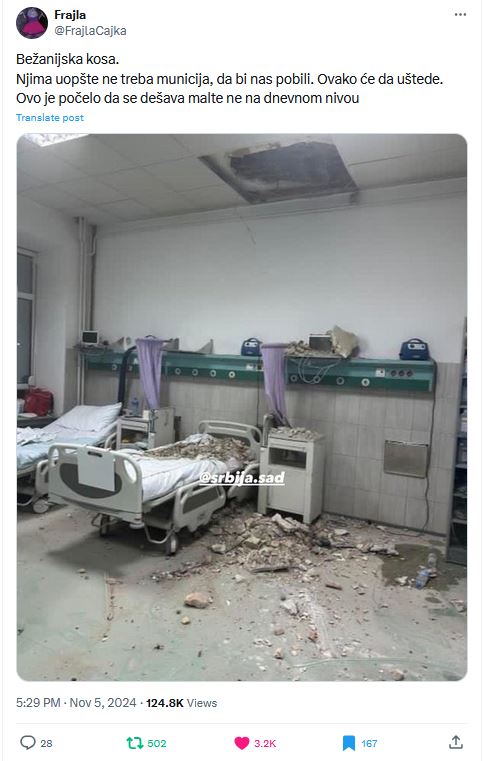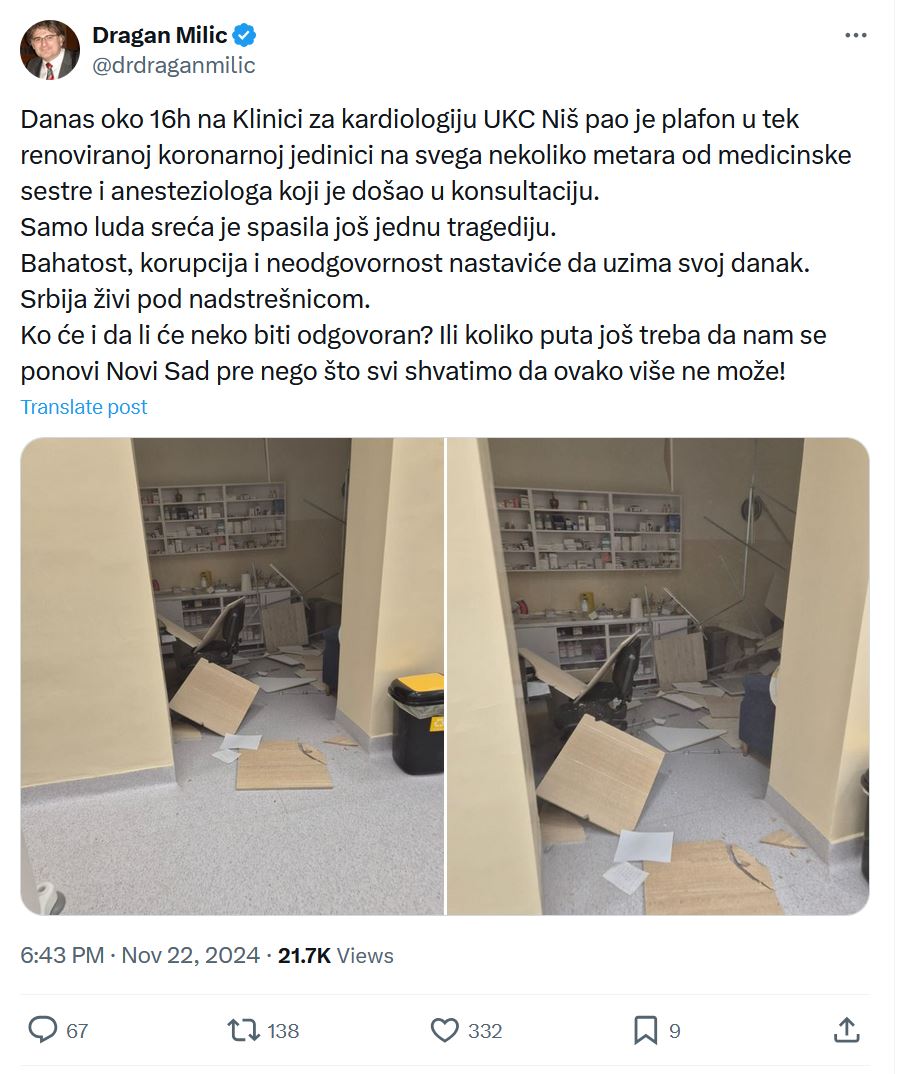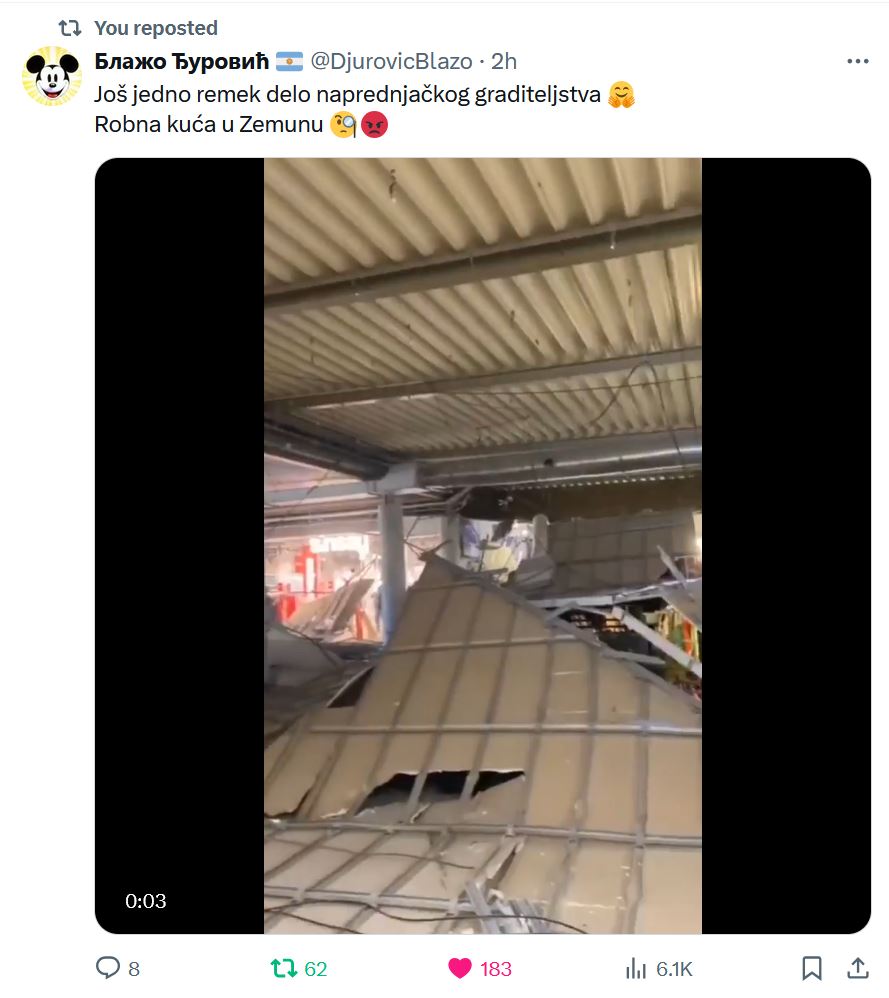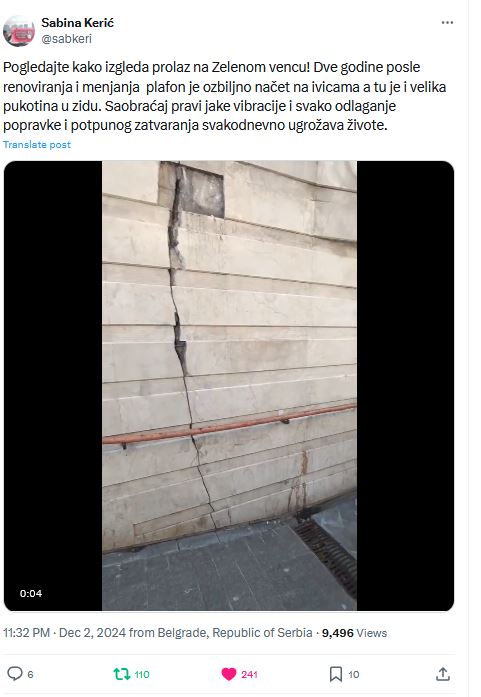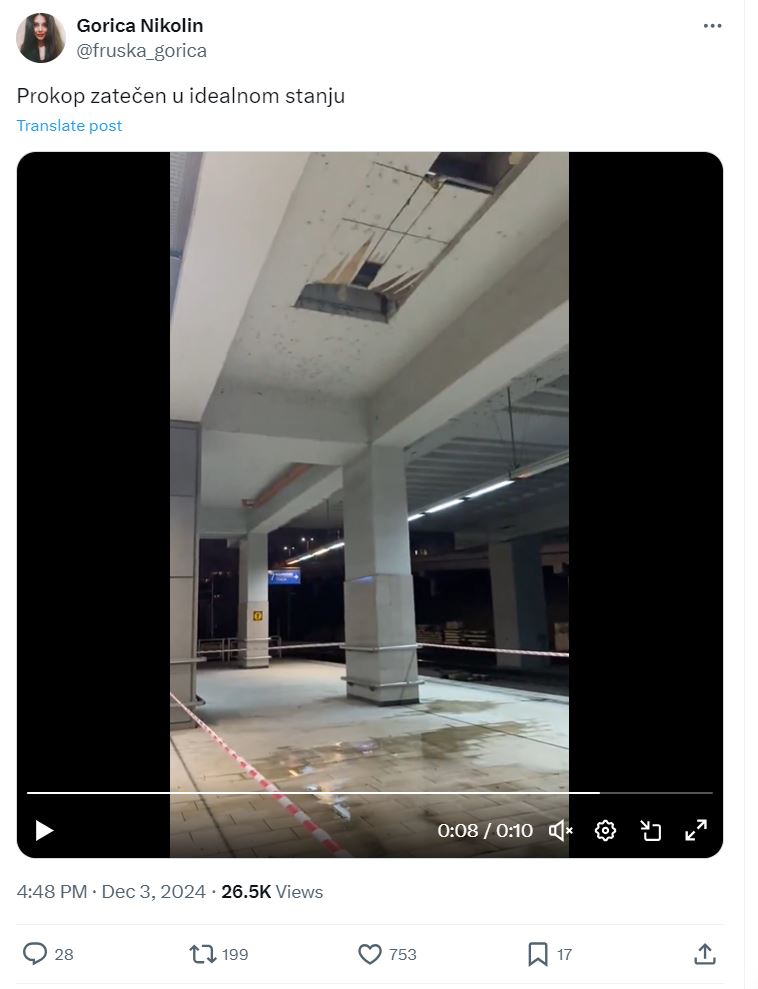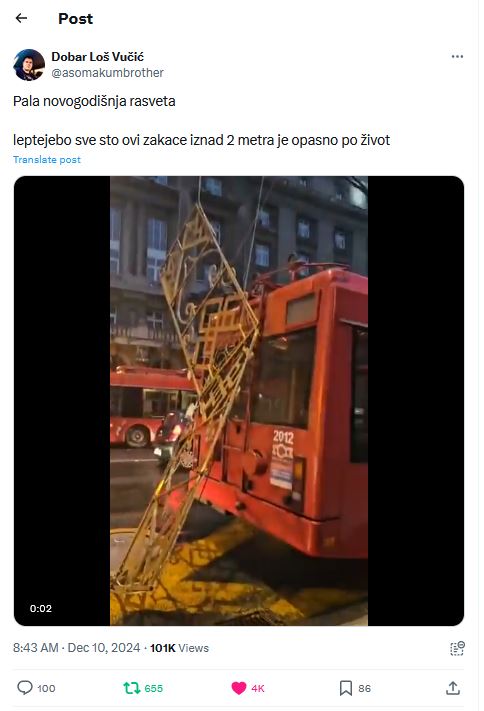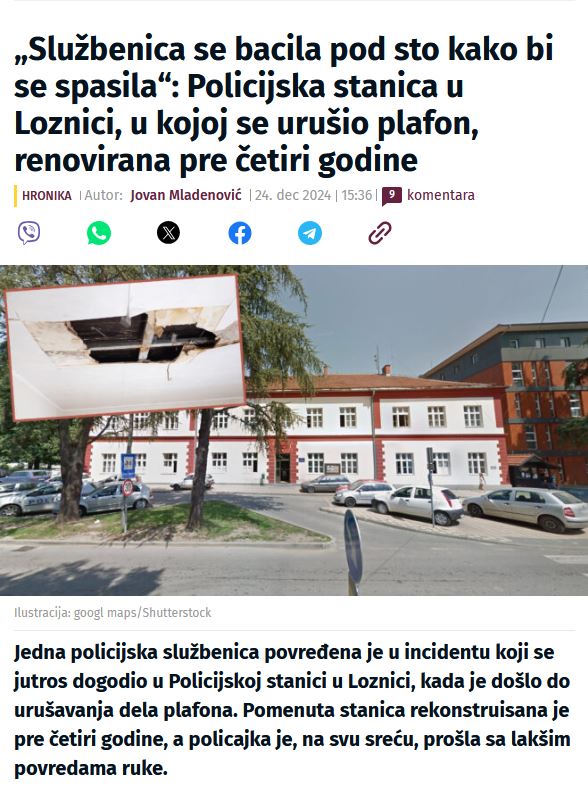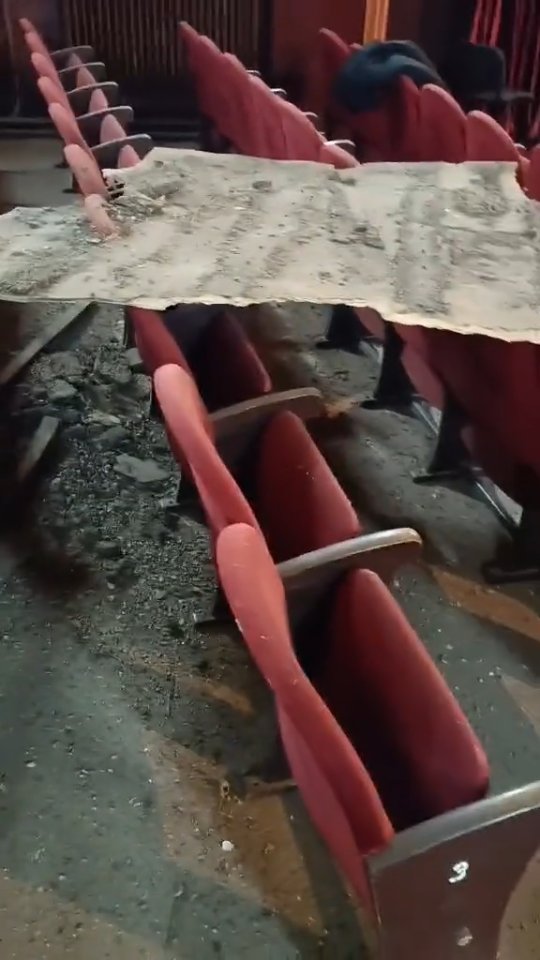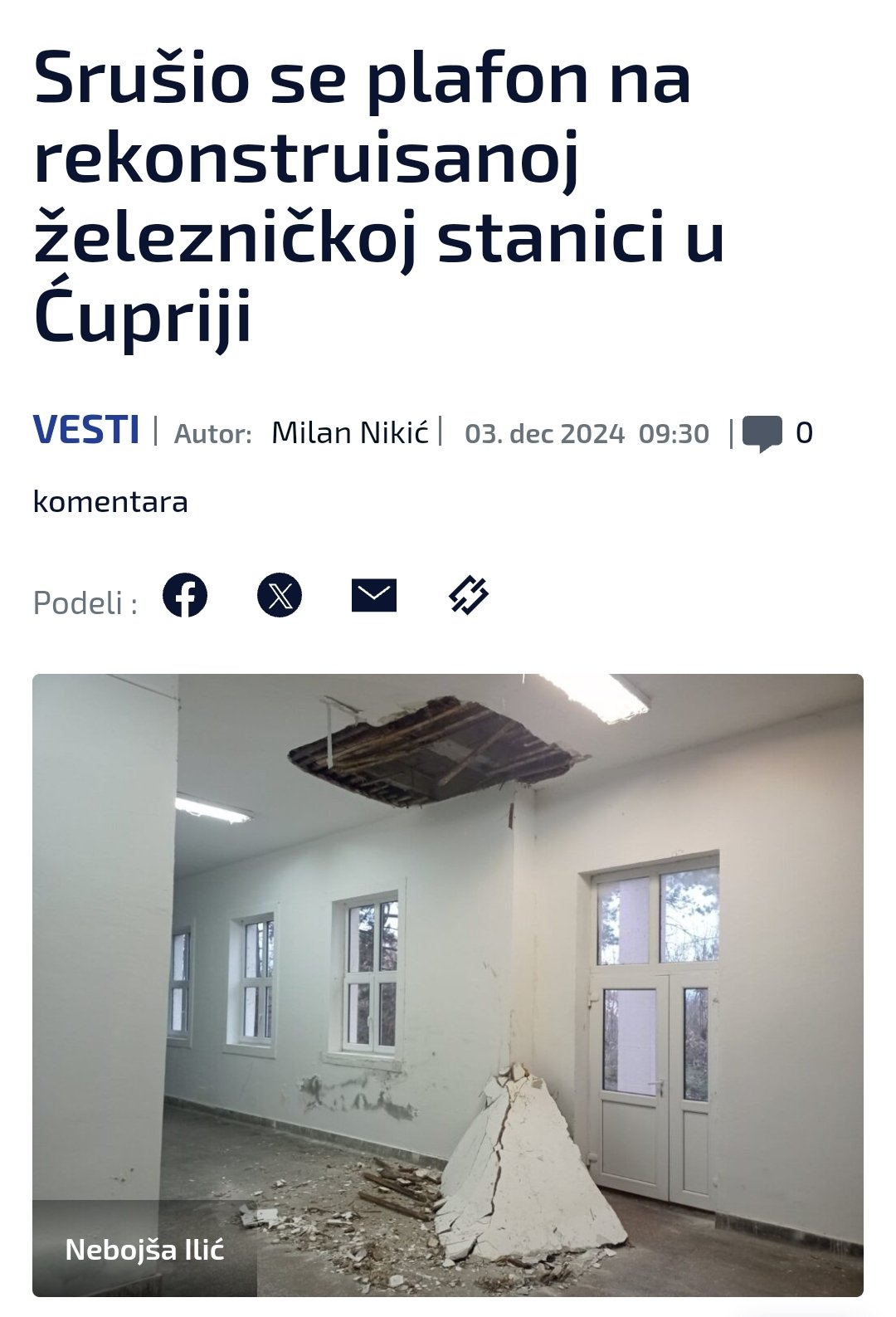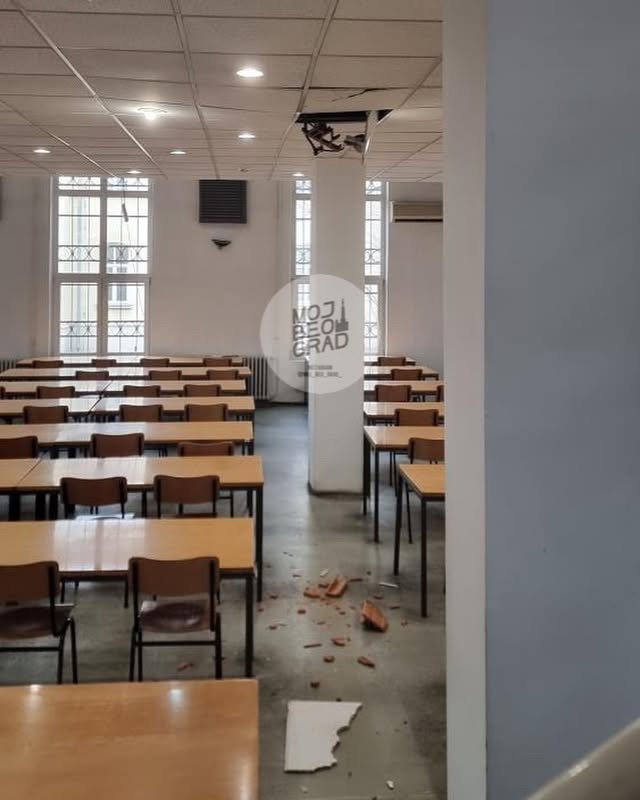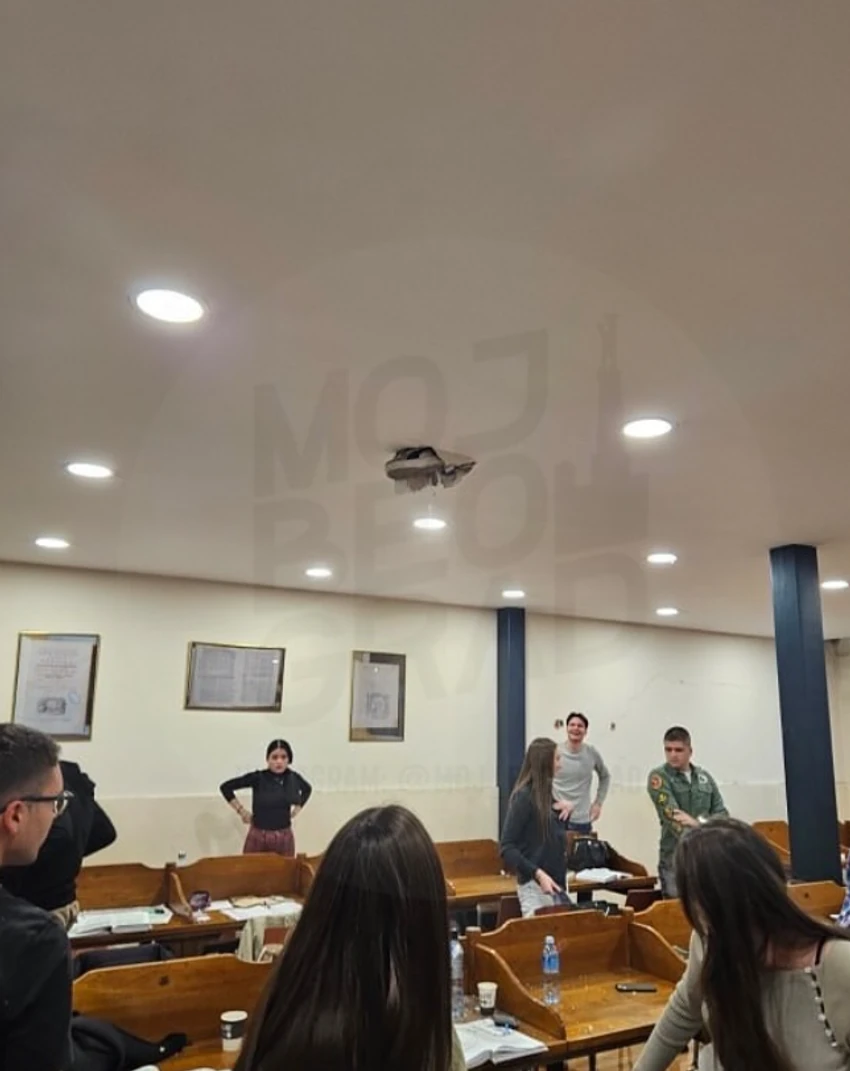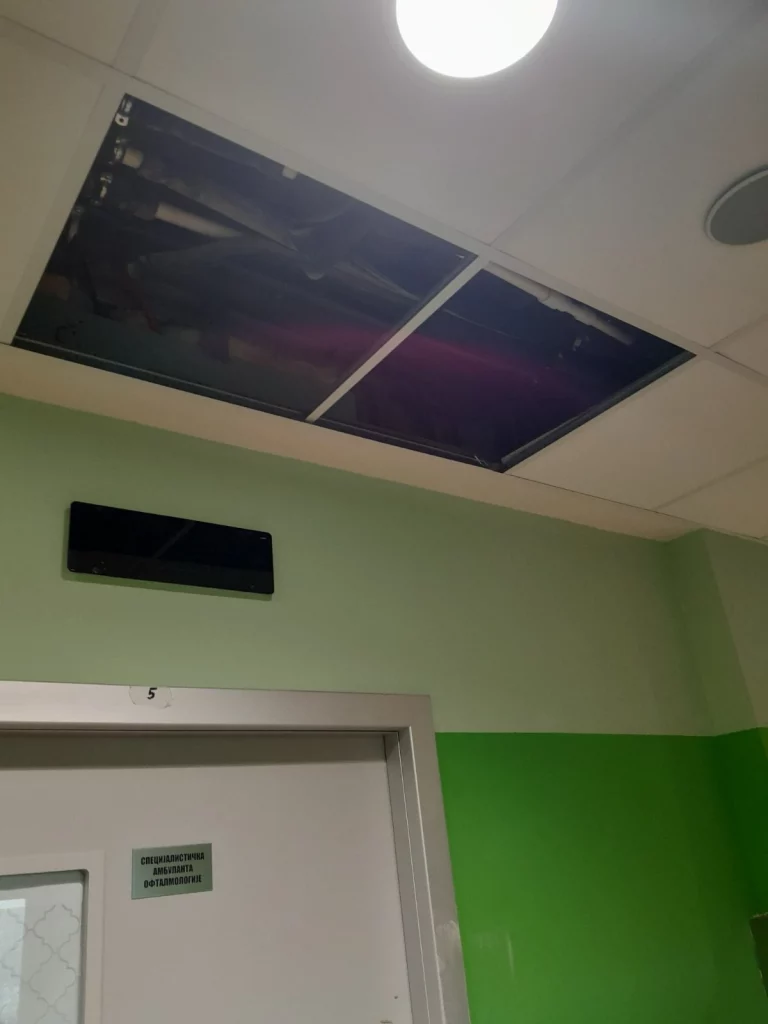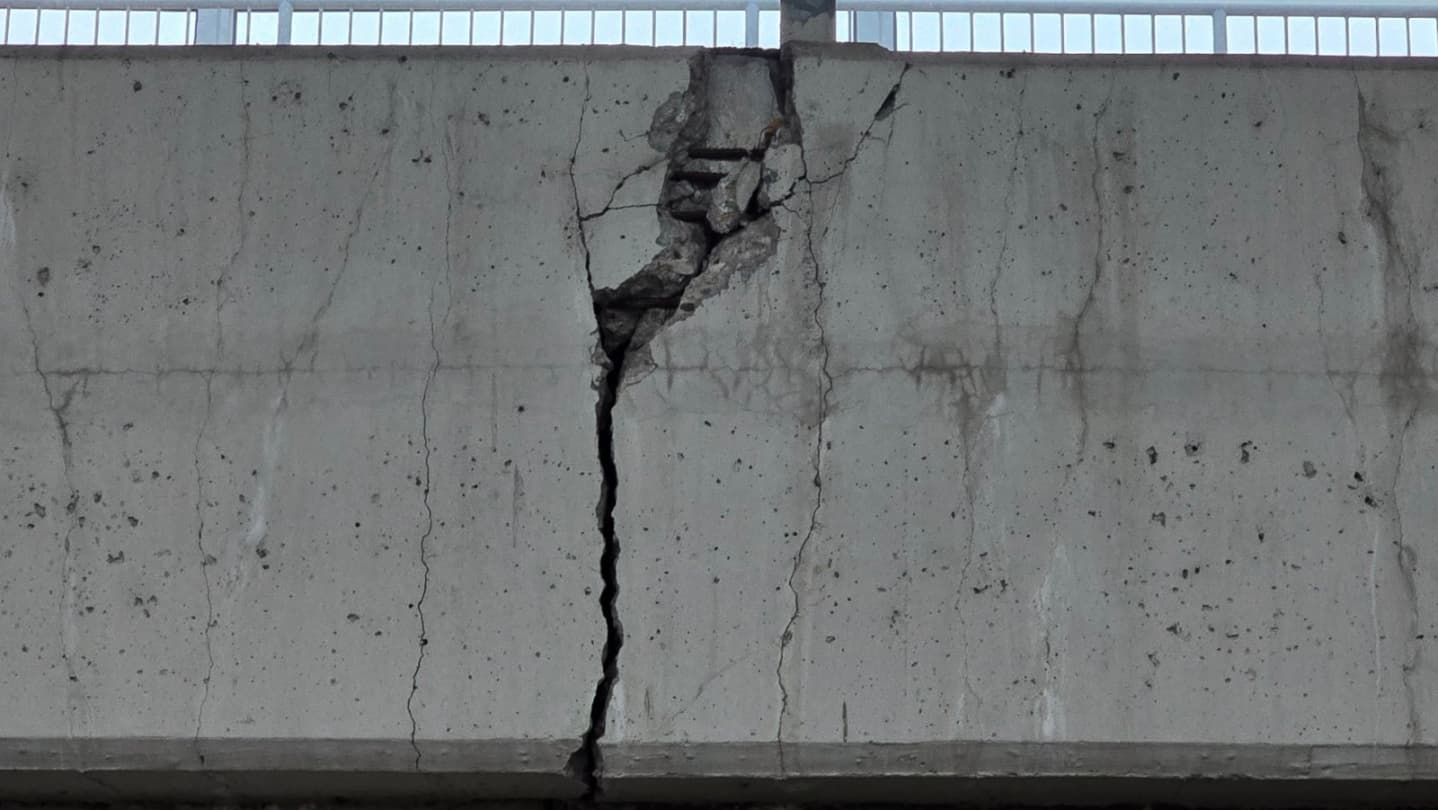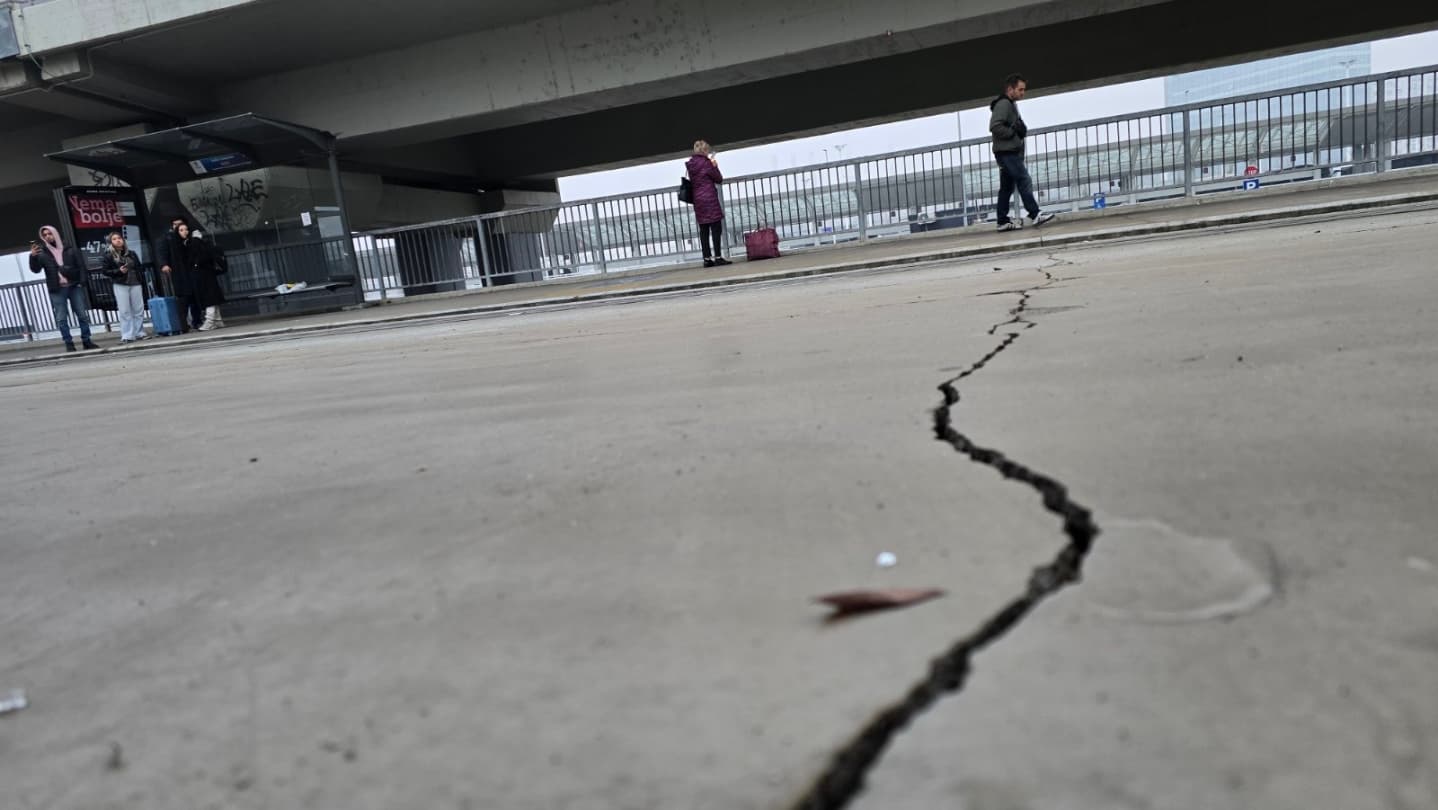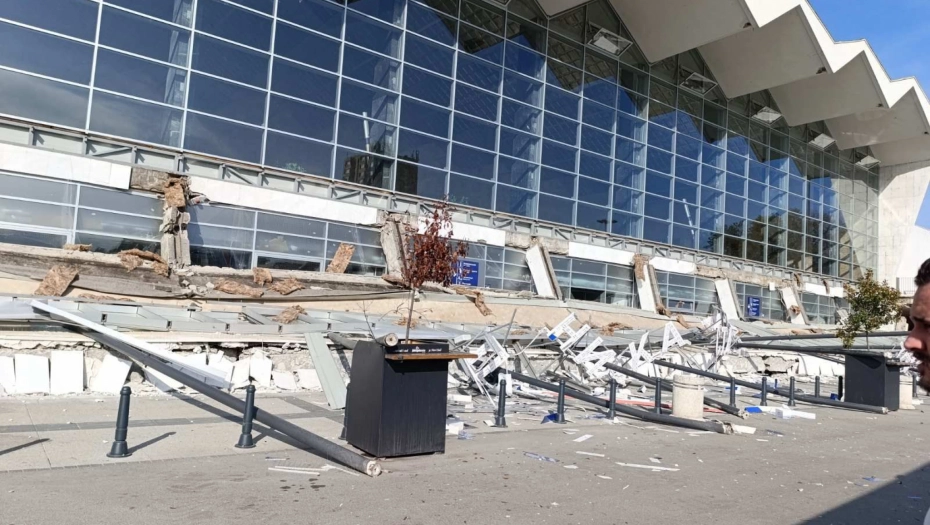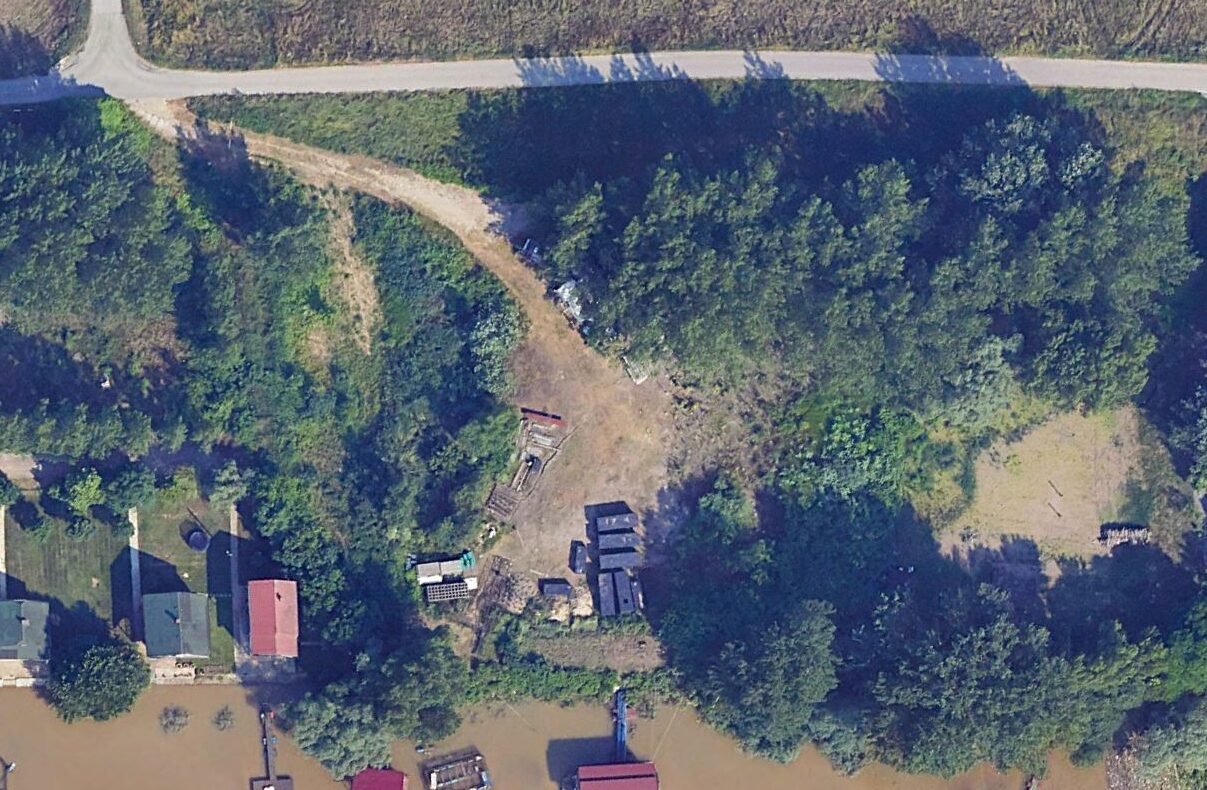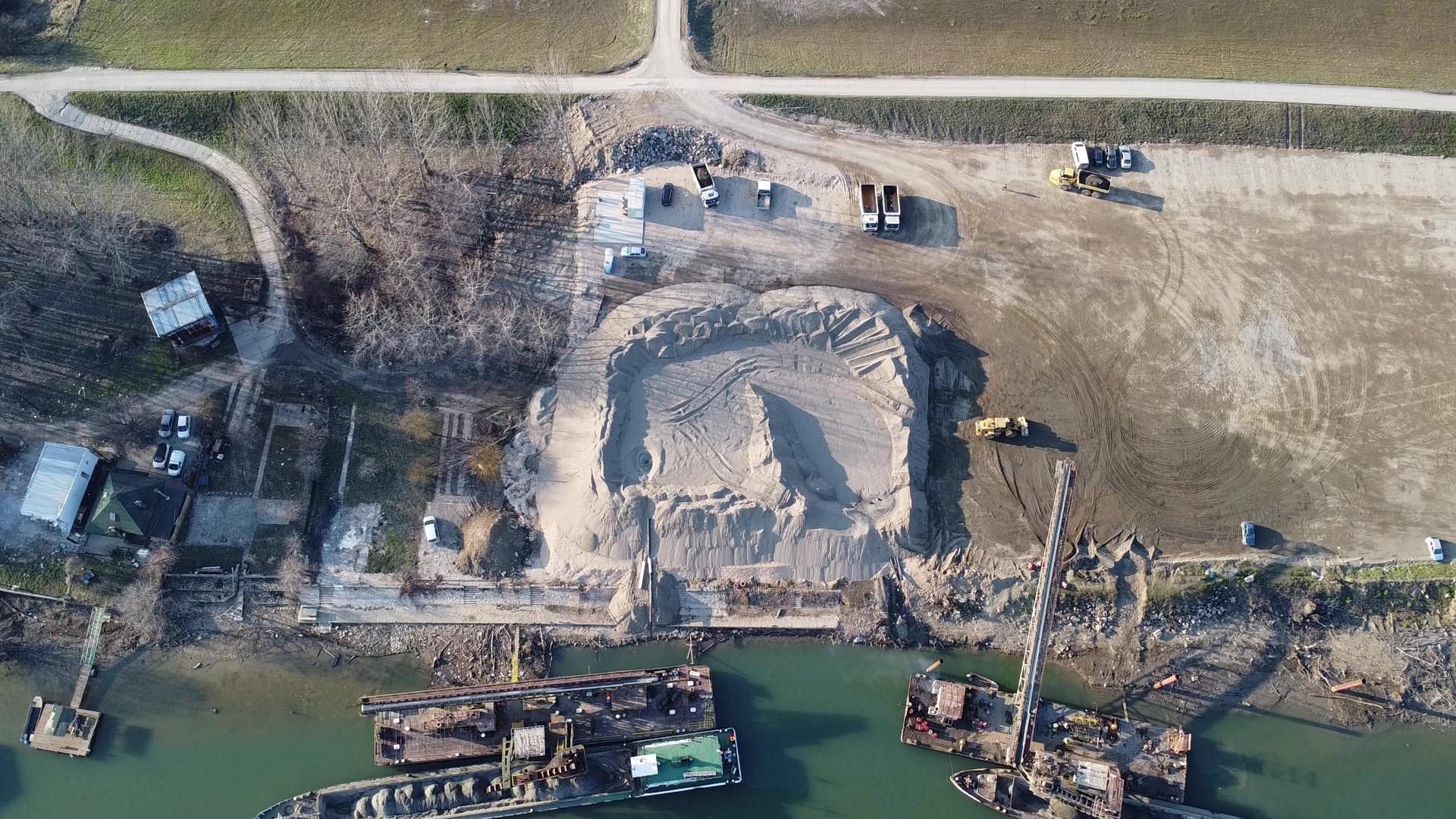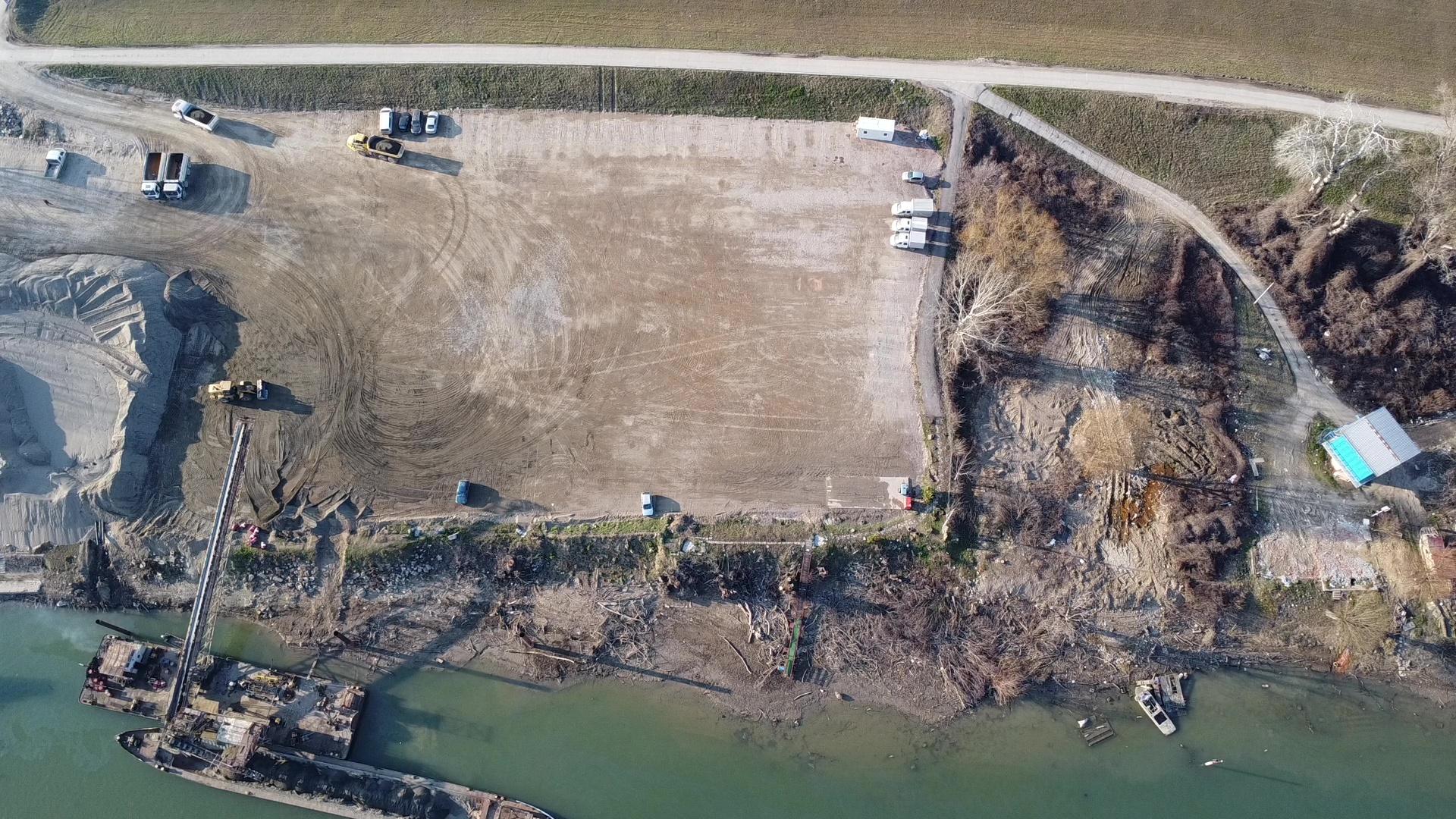EXPO is unsafe and endangers human lives
The current government has proven incapable of constructing public buildings in a safe manner. The entire leadership was focused on promoting the railway station in Novi Sad, which became unsafe after its reconstruction; as a result, 15 people lost their lives, while two were seriously injured. The company Egis, which was involved in overseeing the construction work there, is now participating as a designer in the EXPO 2027 project [1].
In 2023, the Law on Special Procedures for the Implementation of the International Specialized Exhibition EXPO BELGRADE 2027 was adopted, which shortens the procedures for obtaining construction permits and introduces a phased system in which permits are issued for individual phases of this project. Such an acceleration of construction may have negative consequences for the safety of buildings [2].
The risks of construction on Surčin Field are increased due to the unfavorable terrain, requiring special measures, with priority given to alignment with water management issues [3].
The government has adopted, through an expedited procedure, the Draft Law on Amendments to the Law on Planning and Construction and the Draft Law on Amendments to the Law on Special Procedures for the Implementation of the International Specialized Exhibition “EXPO Belgrade 2027.”
These amendments propose allowing buildings to be put into operation without a usability permit and issuing construction permits without approval of an environmental impact study. This approach further jeopardizes the safety of structures. According to these proposals, EXPO facilities may be put into operation regardless of their environmental impact [4], [5].
The Association of Architects of Serbia announced that, together with representatives from several universities, institutes, and non-governmental organizations, it has requested the Ministry of Construction to withdraw these draft laws from parliamentary procedure, citing the lack of public debate on the matte [6].
Numerous incidents related to public works have occurred without accountability, pointing to a high level of corruption. There are far too many examples: the recently renovated Belgrade Center railway station (“Prokop”) leaks; the access road to the Ada Bridge with tram tracks built in 2014 has cracked along its entire length—currently the only tram connection between New Belgrade and the old city.
In November and December 2024, multiple incidents took place: a student fell through the renovated ceiling at the Faculty of Law; ceilings collapsed in the Health Center in Vranje, KBC Bežanijska Kosa, the renovated railway station in Ćuprija, and the police station in Loznica, where an employee was injured. In Kovačica, a window fell on a high school student, and in Belgrade, a trolleybus was struck by holiday decorations.
This unfortunate trend continued into 2025: in January, a ceiling section collapsed in the renovated reading room of the Faculty of Medicine; in Ljubić, near Čačak, the facade of the renovated health center fell; in February, the ceiling collapsed in a reconstructed school in Pećinci, and in Kragujevac, a ceiling section fell on a patient at the University Clinical Center. A ceiling also collapsed in a renovated cinema in Stara Pazova, among many other incidents.
EXPO endangers Belgrade’s water supply and flood protection
EXPO is being built on Surčin Field, which belongs to the catchment area of Belgrade’s water source on the left bank of the Sava River, where wells with horizontal drainage (“Reni wells”) are located, extracting groundwater for water supply.
Construction in this area will reduce the flow of water from the hinterland, specifically from Bežanijska Kosa, toward the Reni wells. The flow of Reni wells could be increased through artificial infiltration on Surčin Field, but this option is lost due to the construction of buildings within the EXPO project.
There is also a risk that active Reni wells may be sacrificed for the planned dock on the left bank of the Sava [7], [8].
A plan for the regulation of the riverfront is currently being adopted, linked to the national stadium project, and is being enacted by the Spatial Planning Agency instead of the City of Belgrade. It is unclear how the Sava riverfront, a public asset intended for flood protection and water supply, has become associated with the national stadium.
It appears that the national stadium project, including EXPO 2027, is being misused to allow individuals to usurp the Sava riverfront. There are plans for an unnecessary road alongside the embankment and excavation of the embankment for infrastructure installations, likely to provide utilities for illegal vacation homes and other structures within the riverbed.
This constitutes an abuse of position, encouraging criminal activities, and creates public danger, threatening the safety and property of many people living in New Belgrade, Surčin, Boljevci, Progar, and other settlements along the Sava River [9].
At the EXPO transshipment site in the Sava Riverbed, 1,100 meters before the Ostružnica Bridge, it resembles the Wild West. Everything is completely illegal, as all activities taking place are strictly prohibited in the restricted sanitary protection zone.
Additionally, construction work is being carried out directly at the base of the embankment, and less than 10 meters from it, without any permits. However, Article 133 of the Water Law requires proof that such work does not damage the embankment.
A large international port is planned at this location, which is inappropriate for the designated purpose of the Sava’s left bank [10], [11], [12], [13], [14].
An equally significant problem is that the only remaining major green space in the Sava district of New Belgrade, home to over 150,000 residents, is being paved over. In Vienna, a similar area containing a water source has been declared a nature park, where citizens can enjoy public access—the only reasonable solution for protecting a water source.
The EXPO 2027 website cynically refers to this harmful project as Serbia’s green agenda, stating:
“The Expo complex design concept is based around providing an ‘Urban Oasis’ which would become the key urban destination for tourists, Expo visitors and city dwellers, further adding to its green agenda” [15].
Meanwhile, the government, by proposing new laws—without any public debate—seeks to abolish the legal obligation to assess the environmental and water supply impact of construction.
EXPO 2027 is a synonim for corruption
There is no feasibility study for the EXPO 2027 project, and it is evident that it cannot recover even a small fraction of the planned expenditure of 17 billion euros [16], [17]. This sum translates to a debt of approximately 7,000 euros per household, not including interest, for a harmful project.
Under the law specifically drafted for EXPO 2027, the requirement for public procurement procedures related to the project has been abolished, despite its officially stated value exceeding 17 billion euros.
EXPO 2027 is being built on Surčin Field, covering land that the state sold to the company Al Dahra. According to media reports, the Tax Administration assessed the value of the land in Surčin Field at 500,000 euros per hectare, while the government sold it to Al Dahra for only 4,700 euros per hectare—a hundredfold decrease [18].
Although EXPO 2027 was officially allocated 25 hectares, the government has included over 800 hectares in a special-purpose plan for the exhibition. This plan overrides other city plans for the designated location, constituting a clear abuse of the law [19]. The government is exploiting this project to create the false impression of legalizing structures on water land, which are harmful and dangerous.
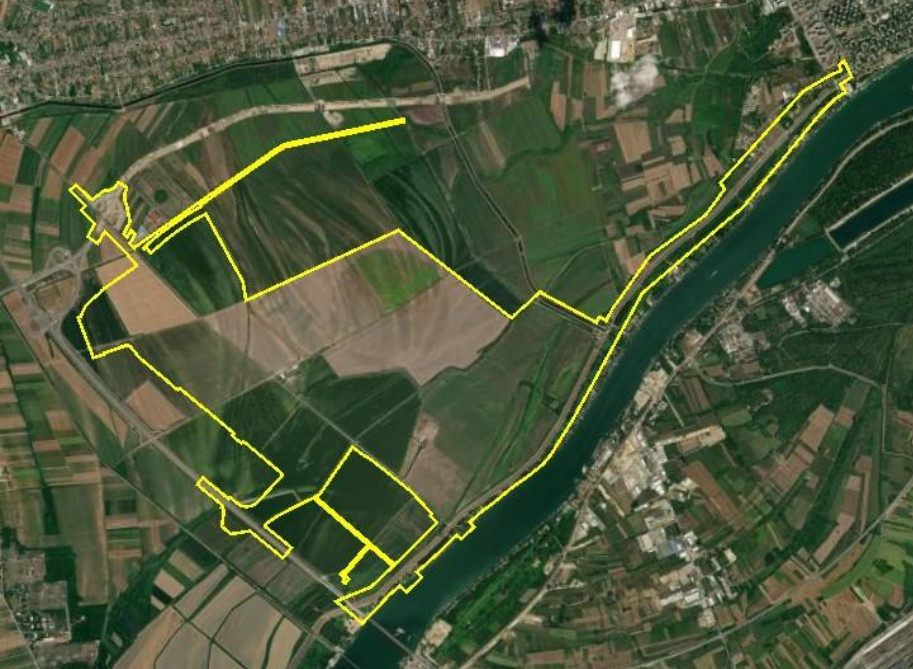
Due to the construction of expo buildings, the government plans to demolish the existing Belgrade Fair to make way for residential and commercial spaces within Belgrade Waterfront. However, Belgrade has an exceptionally well-designed fair, recognized internationally as a top-tier urban and architectural achievement. The current fair operates below capacity, making a new, larger fair unnecessary and unlikely to generate profit.
The Academy of Engineering Sciences of Serbia has stated that the Belgrade Fair complex, including Halls 1, 2, and 3, which are architectural and structural masterpieces, represents an outstanding construction achievement of global significance. The fair was planned, designed, built, and used as a unified architectural and functional entity, not merely a collection of individual buildings. Therefore, its future must not be left to private interests, nor should it be determined through piecemeal demolitions and new constructions.
Relevant professional associations have adopted a Declaration on the Fate of the Belgrade Fair and the General Staff Building, one of the demands being:
“The repeal of the current decision and the adoption of a new resolution, aligned with the original decision of the Government of Serbia No. 633-5959/2008 from January 15, 2009, which declared the Belgrade Fair complex a cultural monument as a whole. This would protect Halls 2, 3, and 4 from demolition, as they form an integral unit with Hall 1, and establish protection measures for the entire Belgrade Fair area. Additionally, we demand a broad consensus on the public interest in its further planned development” [20].
The Declaration on the Fate of the Belgrade Fair and the General Staff Building was signed by the Academy of Engineering Sciences of Serbia (AINS), the Academy of Architecture of Serbia (AAS), the Association of Architects of Serbia (UAS), the Society of Architects of Belgrade (DAB), the Society of Architects of Novi Sad (DANS), the Society of Architects of Niš (DAN), the Society of Architects of Zrenjanin (DAZ), the Society of Architects of Valjevo (DAV), and the Society of Architects of Vranje (DVA).
It was supported by the Faculty of Architecture of the University of Belgrade (AFUBG), the Faculty of Geography at the University of Belgrade—Department of Spatial Planning, the Association of Urban Planners of Serbia (UUS), the Society of Conservators of Serbia (DKS), Do.co.mo.mo. Serbia (the national section of the International Working Group for Documentation and Conservation of Buildings, Sites, and Complexes of the Modern Movement in Architecture), Europa Nostra Serbia, the Association of Landscape Architects of Serbia (UPAS), the Regulatory Institute for Renewable Energy and Environmental Protection (RERI), the Ministry of Space, New Planning Practices, and SFERA (a platform for dialogue and architectural promotion).
Beyond this, EXPO is threatened by extensive damage to the Sava embankment, caused by vehicle traffic, drilling, and excavation. Restoring the embankment within the set deadlines is impossible, and particularly, proper restoration adhering to professional standards cannot be achieved when state institutions are dysfunctional [21].
According to the official EXPO 2027 website, four million visitors from around the world are expected. They will be at risk from collapsing ceilings, facades, and canopies lacking occupancy permits, as well as potential flooding if the embankment ruptures during high water levels.
Due to the failure to enforce laws regarding the Sava embankment, authorities are endangering both public safety and the 17-billion-euro investment. The Association of Architects is requesting the withdrawal of the Planning and Construction Law and the EXPO 2027 Law from parliamentary procedure.
EXPO 2027 must be urgently stopped, and illegal structures on the Sava embankment must be removed immediately. A nature park should be created along the Sava, similar to the one in Vienna.
Unformal Association Savski nasip
[1] Intervju prof. Kuzmanovića za Radar
[2] Zakon o posebnim postupcima radi realizacije međunarodne specijalizovane izložbe EXPO BELGRADE 2027
[3] Predlog Generalnog urbanističkog plana za Beograd 2041
[4] Predlog zakona o izmenama i dopunama Zakona o planiranju i izgradnji
[7] Vodoprivredna osnova Srbije 2001
[8] Strategija upravlja vodama na teritoriji Republike Srbije do 2034. godine
[10] Zahtev JVP Srbijavode za informacijom o dozvoli za pretovarno mesto, 2.2.2025
[12] Nepotpuni odgovor JVP Srbijavode, 14.2.2025
[13] Novi zahtev JVP Srbijavode za informacijom o dozvoli za pretovarno mesto, 18.2.2025
[14] Odgovor JKP BVK 24.2.2025.
[15] BIE EXPO sajt loše informisan
[16] Zakon o posebnim postupcima radi realizacije međunarodne specijalizovane izložbe EXPO BELGRADE 2027
[17] Izjava direktora EXPO 2027 Dušana Borovčanina
[18] Srbija za izgradnju EXPO-a otkupljuje zemljište u predgrađu Beograda za pola miliona evra po hektaru
[20] Deklaracija o sudbini Beogradskog sajma i Generalštaba
[21] Zvanični sajt neformalnog udruženja Savski nasip


